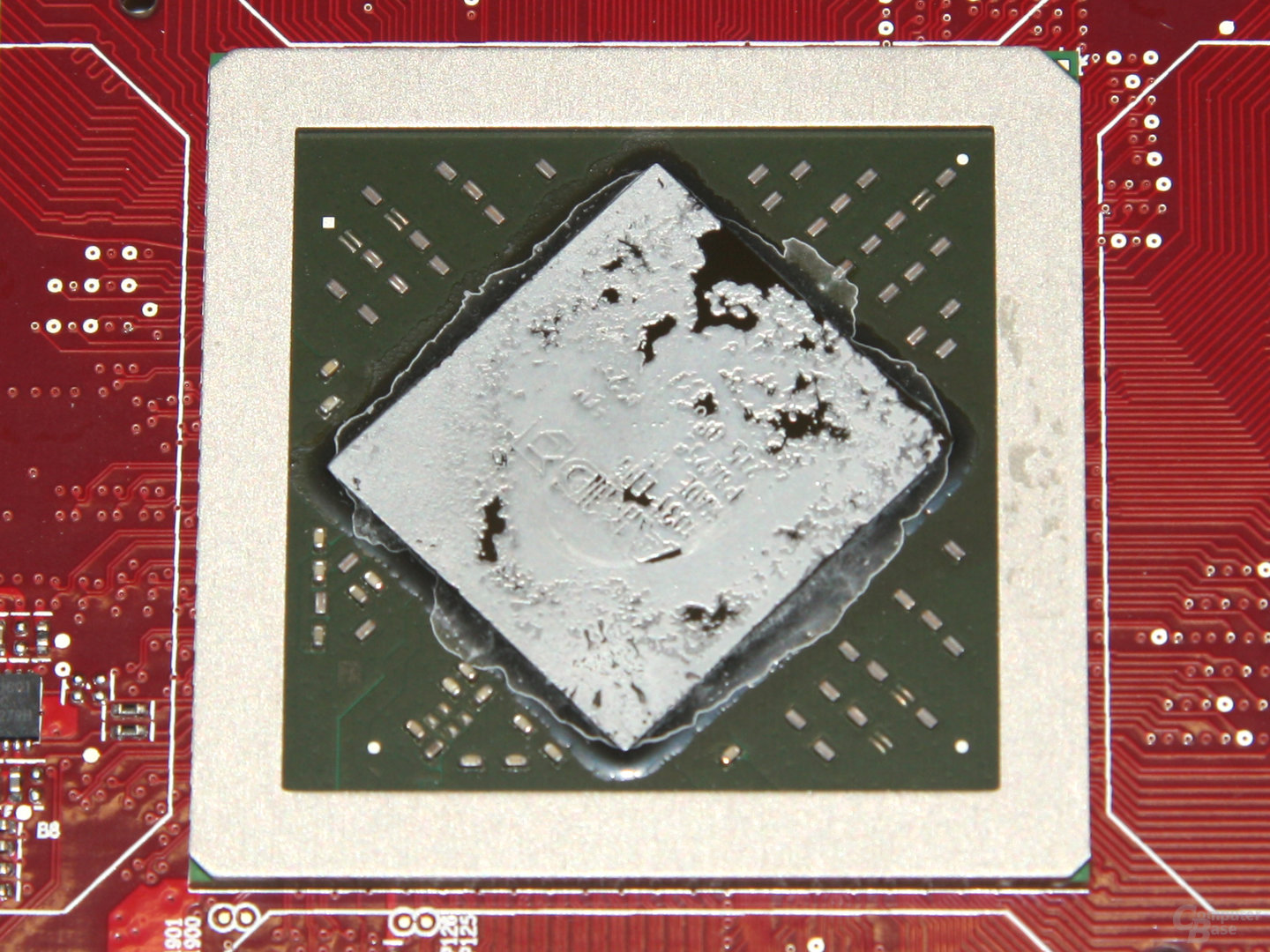HD 6950 im Test: AMD halbiert Speicher und besiegt die Konkurrenz immer noch
2/30Technische Daten
| Radeon HD 5870 |
Radeon HD 6950 (1.024 MB) |
Radeon HD 6970 |
GeForce GTX 560 Ti |
GeForce GTX 570 |
|
|---|---|---|---|---|---|
| Logo |  |
 |
 |
||
| Chip | Cypress | Cayman | Cayman | GF114 | GF110 |
| Transistoren | ca. 2,15 Mrd. | ca. 2,64 Mrd. | ca. 2,64 Mrd. | ca. 1,95 Mrd. | ca. 3 Mrd. |
| Fertigung | 40 nm | 40 nm | 40 nm | 40 nm | 40 nm |
| Chiptakt | 850 MHz | 800 MHz | 880 MHz | 822 MHz | 732 MHz |
| Shadertakt | 850 MHz | 800 MHz | 880 MHz | 1.645 MHz | 1.464 MHz |
| Shader-Einheiten (MADD) |
320 (5D) | 352 (4D) | 384 (4D) | 384 (1D) | 480 (1D) |
| FLOPs (MAD) | 2.720 GFLOPS | 2.253 GFLOPS | 2.703 GFLOPS | 1.253 GFLOPS | 1.405 GFLOPS |
| ROPs | 32 | 32 | 32 | 32 | 40 |
| Pixelfüllrate | 27.200 MPix/s | 25.600 MPix/s | 28.160 MPix/s | 26.304 MPix/s | 21.960 MPix/s |
| TMUs | 80 | 88 | 96 | 64 | 60 |
| TAUs | 80 | 88 | 96 | 64 | 60 |
| Texelfüllrate | 68.000 MTex/s | 70.400 MTex/s | 84.480 MTex/s | 52.608 MTex/s | 43.920 MTex/s |
| Shader-Model | SM 5 | SM 5 | SM 5 | SM 5 | SM 5 |
| Hybrid-CF/-SLI | X | X | X | X | X |
| effektive Windows Stromsparfunktion |
✓ | ✓ | ✓ | ✓ | ✓ |
| Speichermenge | 1.024 MB GDDR5 | 1.024/2.048 MB GDDR5 | 2.048 MB GDDR5 | 1.024 MB GDDR5 | 1.280 MB GDDR5 |
| Speichertakt | 2.400 MHz | 2.500 MHz | 2.750 MHz | 2.004 MHz | 1.900 MHz |
| Speicherinterface | 256 Bit | 256 Bit | 256 Bit | 256 Bit | 320 Bit |
| Speicherbandbreite | 153.600 MB/s | 160.000 MB/s | 176.000 MB/s | 128.256 MB/s | 152.000 MB/s |
Wer genauere technische Details zur Radeon HD 6950 lesen möchte, dem empfehlen wir einen Blick in unsere Launch-Review.

